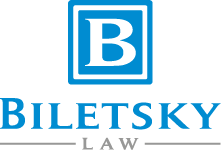Trademark Classes
 A common misperception about trademark law is that once you have registered a trademark, that you own all of the rights to the name, logo, or brand (these are referred to as the “mark”). In reality, this is not necessarily the case. When registering a trademark, one of the essential steps is choosing which class best fits your product or service. Once the trademark application survives the examination process, you will then receive the trademark rights to your mark in the particular class that you selected.
A common misperception about trademark law is that once you have registered a trademark, that you own all of the rights to the name, logo, or brand (these are referred to as the “mark”). In reality, this is not necessarily the case. When registering a trademark, one of the essential steps is choosing which class best fits your product or service. Once the trademark application survives the examination process, you will then receive the trademark rights to your mark in the particular class that you selected.
For example, Coca-Cola may have originally registered their mark as a beverage (Perhaps under Class 032 – Beers and Beverages). At that point, someone who sold couches and other furniture (Class 020 – Furniture) under the name Coca-Cola would likely have been permitted to use the name Coca-Cola because there isn’t a high likelihood of confusion amongst consumers. A likelihood of confusion is the standard for trademark infringment, but that’s a whole other topic for another article!
Nowadays, because of the massive branding around Coca-Cola, and the possibility of the company having registered their mark under a multitude of different classes, the opportunities for other people to come up and use the name in a different product or service is diminishing.
Before getting back to what the different classes mean, here is a little history on the classification system. In 1957, the Nice Agreement, or the “Nice Agreement Concerning the International Classification of Goods and Services for the Purposes of the Registration of Marks” established a set of classifications to be used as the basis of registering trademarks.
One of the underlying purposes for establishing this class system was to set up a uniform method for making it easier for trademarks to be classified appropriately regardless of the country of origin of the mark. As of now, the Nice Classification had been adopted by 84 different countries and contains over 11,000 detailed descriptions of different products and services.
Now that you have a basic understanding of what classes are, and where they came from, we can dive into what this all means for you. The classes are divided into two major subsects, Products and Services. There are 34 product classes and 11 service class. Each of these classes are further divided into descriptions. For instance if you are selling camoflauge t-shirts the class would be 025 – Clothing and the description would be “Camoflauge T-shirt.”
Each class has a separate filing fee which ranges between $225 and $375. However, descriptions within each class can be added at no additional fee. So, going off the t-shirt example, if you are also selling dress shirts and sweat shirts, there is no additional fee to include those descriptions in your trademark application.
So, if you have enough money to be able to register your trademark under each class, you’ll be able to have the trademark rights to your mark for pretty much everything, right? Well, not exactly. Trademarks are based upon the use of the mark in commerce. However there are many situations where you may wish to obtain the trademark rights to a product or service but you may not be using the mark in those service quite yet.
That’s where the “Intent to Use” basis comes in. What this means is that you are not currently using the trademark for that product or service, but you intend to do so. However, you cannot just state that you intend to use the mark for every product or service, rather you need to have a bonafide intent to do so. The trademark application even requires you to state that you intend to use that particular class, under penalty of perjury. This means that lying about whether you had the intent to use the product or class can come with serious consequences.
So that is a crash course about the classification system for trademarks. There are many other nuansces to the the trademark process and for the classification selection process. Before submitting a trademark application, it is important that you speak with an intellectual property attorney to help you choose which class is best for your product or service.
For more information on trademarks or the classification system, contact Biletsky Law.
